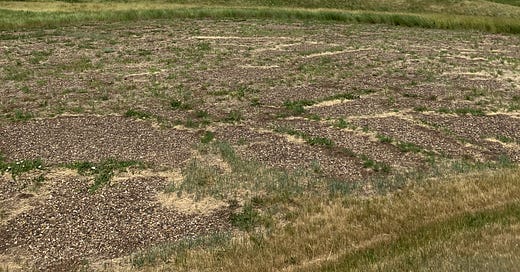An update:
We are nearing the end of this series. Next week, I would like to sneak in an extra example of #churchlandback on paying rent. Then, we will close out this series with the promised evaluation of frameworks based on the United Nations Declaration on the Rights of Indigenous Peoples.
It has taken a little longer to complete this series than first anticipated due to a bout of Covid, PhD deadlines and the return of the book manuscript from my editor! I am diving into revisions and look forward to sharing updates on the book soon, so stay tuned!

Now, let’s turn to this question of solidarity in land claims.
In Canada the treaty process is extremely slow due to limitations placed on how many land claims can be in process in the court system at any one time. On land where there is no existing treaty or where the treaty's terms were determined to be expired (usually because the nation with whom the treaty was made has been classified as “extinct”), only two comprehensive land claims are allowed in the courts at one time. This makes for an extremely slow process as such claims were not even legal in Canada until 1973. Since 1973, there have been only 25 claims settled, with over 140 indigenous groups waiting for settlements. That is an average of one settlement every two years. At this rate, it will take almost 300 years to resolve those cases.1
Reserve 107
The documentary film Reserve 107 follows the story of Mennonite and Lutheran farmers in central Saskatchewan as they move through fear and suspicion around rumours of a land claim being put forward by the Young Chippewa band on land that they had farmed on for generations. The film chronicles that movement from fear and suspicion to understanding and a shared cause, demonstrated in a covenant signing at the end of the film.2 Unfortunately, in real life, that struggle is still far from over. To understand this claim, we must look at how the Young Chippewa came to be disenfranchised from the land granted to them.
In Treaty Six Territory of central Saskatchewan, upon signing the treaty in 1876, the Young Chippewa were to be relocated from their land to Reserve 107, a 77 square kilometre tract of land near Laird Saskatchewan. As in many instances of forced relocation, the food sources in the allocated reserve area were inadequate to feed the community. Requests for assistance from the government were not forthcoming. This was further complicated by tensions and resentments related to the Northwest Resistance. The government began to withhold even the payments agreed upon under Treaty Six out of suspicion that some members had participated in the Reil Resistance. So, the Young Chippewa left the reserve to pursue food rather than face starvation. In their absence, it did not take long to annex the reserve land set aside for the Young Chippewa, and in 1897, the government gave it to Lutheran and Mennonite farmers. This left the Young Chippewa without a land base. When this was contested at the time (remember, it was illegal for Indigenous people to hire a lawyer or go to court for land claims until the 1950s), the Minister for the Interior determined that they could be absorbed into neighbouring reserves, where they were not, in fact, always welcomed.
Generations later, in the early 1990s, the Young Chippewa made a land claim to reinstate the terms of that treaty agreement. In 1995, the court ruled that the land had been taken illegally but that under the rules of the Indian Act, the claimants were not a band, so they were not entitled to submit this kind of land claim under the law. In other words, because it had taken away their land base, the government did not recognize them as a legal entity because they had no land. They would be required now to prove through genealogical records that they were the living descendants who had claim to these lands.
At the 140th anniversary of the signing of Treaty 6, parties came together from the churches, the Young Chippewayan and other community members. The churches and the Young Chippewayan engaged in a covenant renewal and have committed to joining the Young Chippewayan in their fight for a specific land claim. There is no talk of dispossessing anyone of their land but of the needs held in common. The churches have been a part of fundraising for genealogical research and legal battles.
The land claim made by the Young Chippewa at the time of writing this is still unresolved. There have been no transfers of any land and no compensation for land lost. There has been an agreement to live well as good neighbours with a newly formed common memory about what transpired for current realities to exist. The question that remains is, what will happen if the government does not grant the Young Chippewa any compensation? How will the Mennonite and Lutheran communities respond? What would it look like for them to seek repair?
Allow me to say as well that not all Indigenous nations are interested in forming modern treaties. Some feel modern treaties require relinquishing too many rights, and they wish instead to have their sovereignty recognized.
You can see the film here: https://www.reserve107thefilm.com/




